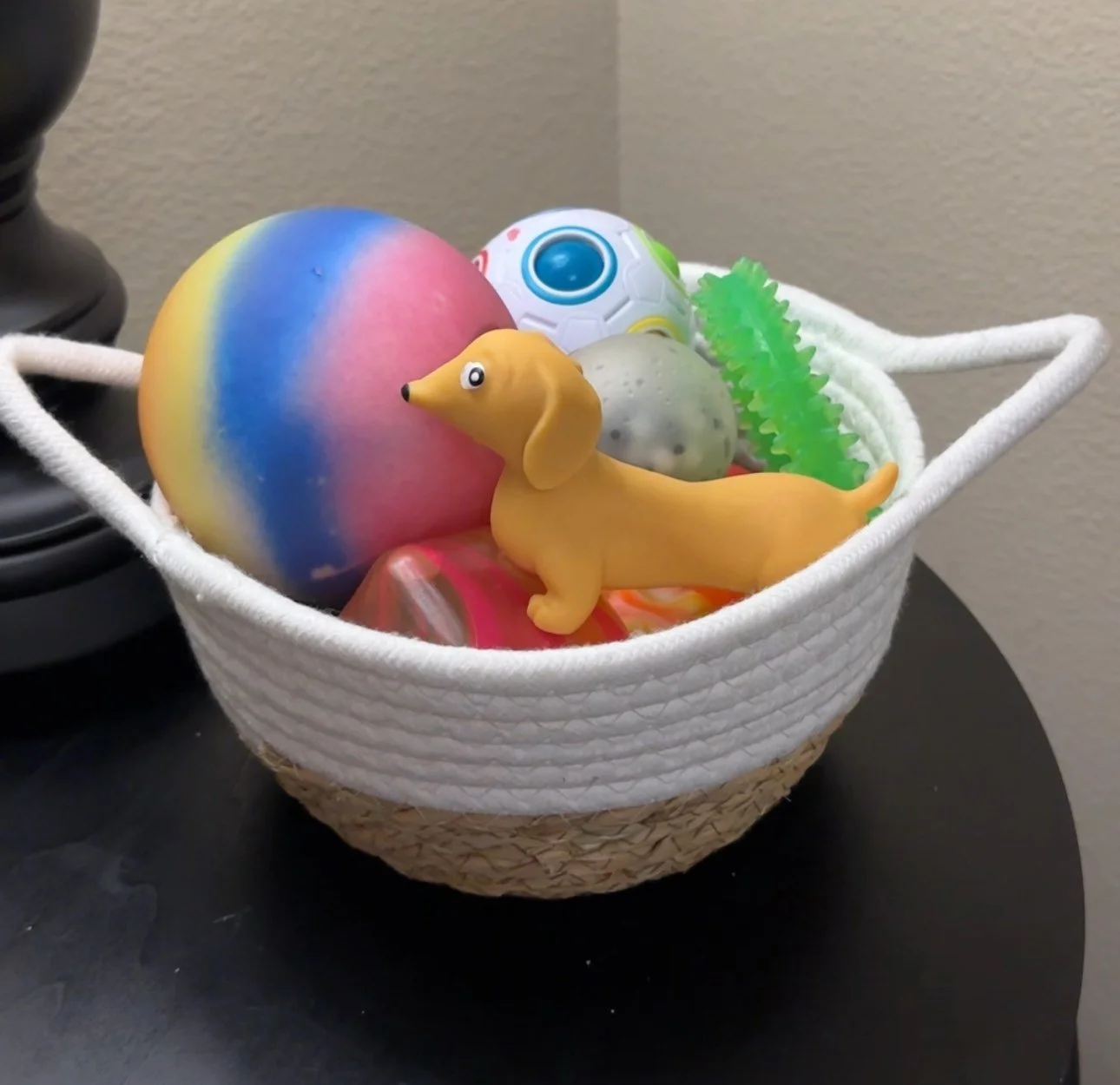Supporting Neurodivergent Kids in the Classroom
In many classrooms, movement is discouraged in the name of attention. But for neurodivergent children—those with ADHD, autism, sensory processing challenges, or anxiety—fidgeting is often not a sign of distraction, but a pathway to focus and regulation.
So what do we do with the child who taps their pencil, doodles constantly, or shifts in their seat every few minutes? Do we ask them to stop? Or do we explore what that behavior might be supporting?
The answer, supported by research and clinical experience, is clear: for many neurodivergent kids, fidgeting is not a problem—it’s a tool.
What Is Fidgeting?
Fidgeting includes small, often repetitive movements—tapping fingers, swinging legs, doodling, chewing on a pencil, using a stress ball, or adjusting one’s posture. These movements can appear inconsequential or even disruptive at first glance, but they frequently serve an important regulatory function.
And while everyone fidgets to some extent, neurodivergent children often rely on it as a strategy to manage attention, sensory input, or emotional overwhelm.
Why Do Neurodivergent Kids Fidget?
Here are several reasons:
Self-Regulation: Helps manage emotional overwhelm or dysregulation.
Focus and Attention: Supports sustained focus, especially for children with ADHD.
Sensory Needs: Provides calming tactile or proprioceptive input.
Anxiety Reduction: Acts as a soothing mechanism in overwhelming environments.
Rather than being “off task,” many children are staying on task because they’re moving.
What the Brain Says About Fidgeting
Scientific research supports what parents and therapists often observe: movement can enhance focus and cognitive performance in children with ADHD.
A UC Davis MIND Institute study observed that children and adolescents with ADHD who moved more intensely—such as tapping, shifting, or leg bouncing—performed significantly better on attention-demanding tasks. ACQUISITION of task-specific brain imaging showed that greater movement correlated with improved cognitive control performance. (Find link here)
More recently, researchers at Western University (Canada) used desk‐cycle movement during cognitive testing while monitoring brain activity with functional near‑infrared spectroscopy (fNIRS). Children with ADHD who pedaled while working exhibited increased blood flow to the prefrontal cortex, the area responsible for executive function and attention—and performed better overall than peers who remained still. (Find link here)
Another pilot study led by bioengineers at the Auckland Bioengineering Institute and Mātai Medical Research Institute used MRI and demonstrated that even in a controlled imaging environment, fidgeting increased blood flow to decision‑making brain regions involved in concentration, across participants both with and without ADHD. (Find link here)
In sum: far from distracting, therapeutic movement may help engage executive brain regions—making fidgeting a potential ally for attention and self‑regulation in neurodivergent children.
The Classroom Dilemma
Even with growing awareness, traditional classroom environments are often designed with neurotypical behavior in mind. Students are expected to sit still, make eye contact, and keep their hands quiet. But these expectations can unintentionally suppress the regulation tools that neurodivergent children need to thrive.
When a teacher tells a child to stop tapping, put the object away, or “just sit still,” it may remove a key tool for coping—leading to more dysregulation, not less.
That’s why we encourage educators and parents to ask a better question:
“Is the fidget helping the child engage, or is it disrupting others?”
Helpful vs. Disruptive Fidgeting
Not all fidgeting is equally effective. Some behaviors can support learning, while others might shift into distraction. The goal is to guide children toward tools that work for them—and for their environment.
✅ Helpful Fidgeting:
Is quiet or subtle (e.g., stress ball under the desk, textured bracelet, silent foot bands)
Helps the child stay on task
Doesn’t distract peers or interfere with teaching
❌ Disruptive Fidgeting:
Creates noise (clicking pens, tapping desks loudly)
Pulls the child’s focus away from learning
Distracts peers or becomes unsafe
It’s not about eliminating movement—it’s about channeling it intentionally.
How Parents Can Support Healthy Fidgeting at School
Notice What Helps at Home
Observe how your child naturally focuses. Do they chew gum, bounce their legs, or play with putty? These behaviors may offer insight into what they need in the classroom.Build a “Safe Fidget” List
Collaborate with your child to create a list of tools that help without causing disruption. Post it somewhere visible at home for easy reference during morning routines.Include Tools in a 504 or IEP Plan
If your child has a diagnosis, work with the school to document fidget strategies in their support plan. Frame these tools as accommodations for regulation, not behavior management.Practice Fidget Etiquette
Teach your child when, where, and how to use fidgets appropriately. Not every classroom allows the same flexibility, so help them learn the boundaries.
How Teachers Can Create Fidget-Friendly Classrooms
Normalize Movement: Create a classroom culture where movement isn’t equated with misbehavior.
Offer Flexible Seating: Try wiggle stools, standing desks, or chair bands.
Provide Inclusive Access: Don’t single out neurodivergent students. Offer tools to everyone as part of classroom culture.
Focus on Function Over Appearance: A student might be bouncing, stretching, or doodling—but are they engaged and learning? If yes, the movement might be serving its purpose.
Final Thoughts: Fidgeting Is a Clue, Not a Disruption
Neurodivergent children often experience the world in more intense or varied ways. Fidgeting is one way they regulate that experience. It can be a sign that a child is working hard to stay focused, manage stimulation, and participate meaningfully.
When we shift the narrative from “fidgeting is bad” to “fidgeting is communication,” we open the door to better understanding, stronger advocacy, and more effective support.
At Harvest Counseling & Wellness, we partner with parents, children, and educators to identify tools that support focus, regulation, and emotional wellbeing—both in and out of the classroom. If your child is struggling with attention, sensory needs, or classroom behavior, we’re here to help guide the process with evidence-based support.
REferences
Brown, P. (2015). Fidgeting may help children with ADHD perform better in school. UC Davis MIND Institute report. Also references trial‑by‑trial analysis showing more intense movement linked to better cognitive control in ADHD youth. https://www.universityofcalifornia.edu/news/fidgeting-may-help-children-adhd-perform-better-school.
Fenesi, B. et al. (2024). Movement during tasks increases prefrontal cortex blood flow and attention in children with ADHD. Western University education study using desk‑cycling and fNIRS. https://news.westernu.ca/2024/08/movement-helps-adhd/.
Fernandez, J. et al. (2021). MRI pilot shows fidgeting increases executive area blood flow during cognitive task performance, Auckland Bioengineering & Mātai Medical Research Institute. https://www.auckland.ac.nz/en/news/2021/03/22/bioengineers-shows-that-fidgeting-might-help-concentration.html.







